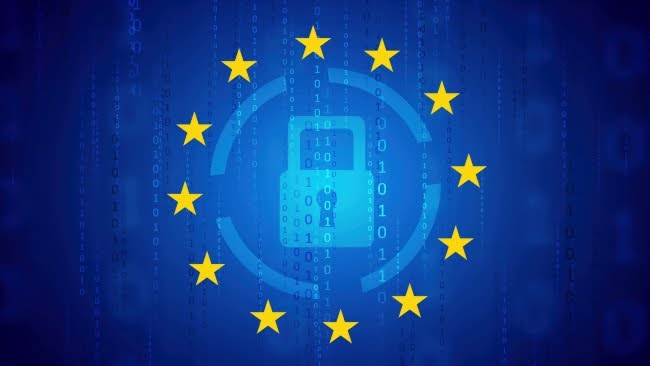In an environment where cybersecurity has become critical for business survival, the entry into force of the NIS 2 Directive marks a before and after for hundreds of organizations in Europe.
This is not a recommendation or a simple guide to best practices: NIS 2 is mandatory and requires companies to protect their systems, data, and services against increasingly complex threats.
But what exactly does this directive imply? How does it affect companies in Spain, and which sectors must comply with it? Above all, how can an organization adapt without being overwhelmed by technical complexity?
This article explains everything clearly and shows how tools like Kartos by Enthec can help you take that step safely and effectively.
What is the NIS 2 Directive?
The NIS 2 Directive (Network and Information Security) is the evolution of the first NIS directive, approved in 2016. It was created to improve the resilience of essential services to cyberattacks. resilience of essential services to cyberattacks.
However, the first version was reduced due to the evolving threat landscape. That’s why the European Union published the new NIS 2 Directive in January 2023, significantly expanding its scope and requirements.

What changes with NIS 2?
- The number of affected sectors is expanded.
- Security and notification obligations are tightened.
- Penalties for non-compliance are increased.
- Cybersecurity governance and oversight in member countries are strengthened.
NIS 2 regulates and demands active company responsibility, incorporating continuous surveillance, prevention, and threat response measures.
Which companies are affected by NIS 2?
One of the key points of this regulation is its expansion of the scope of application.. It is no longer limited to large critical infrastructures such as electricity, transport, or health. No,w it also includes medium and large companies in sectors such as:
- Information and communication technologies (ICT)
- Chemical and food manufacturing
- Water, waste, and digital services management
- Cloud service providers, data centers, DNS, and domain registries
According to INCIBE estimates, more than 12,000 entities in Spain could be affected by the NIS 2 regulation.. Many of them, especially tech SMEs, have not yet started to prepare.
What does NIS 2 require of companies?
Complying with NIS 2 is not just a matter of software or firewalls;it involves a comprehensive approach that affects the organization at multiple levels.
Among the main requirements, the following stand out:
Technical and organisational measures
Enterprises must implement appropriate security controls, from network segmentation and vulnerability management to access policies or data encryption.
Ongoing risk assessments
Regulations require regular analyses and assessments of risks associated with the security of networks and systems.
Obligation to report incidents
In the event of a significant incident, the company must inform the competent authorities within 24 hours, which requires having effective detection and response systems.
Governance and accountability
Senior management must be actively involved in the cybersecurity strategy. Responsibility cannot be delegated solely to technical teams.
Sanctioning regime
NIS 2 introduces penalties that can reach up to €10 million or 2% of global annual turnover, making compliance a strategic necessity.
You may be interested in our post→ Regulatory compliance in cybersecurity: Keys to being current.
How do you prepare to comply with NIS 2?
Given the scope and requirement of this directive, many companies are looking for solutions that allow them to adapt without slowing down their activity.. This is where Continuous Threat Exposure Management (CTEM) comes in.
This approach allows companies to monitor their systems, detect weaknesses in real time, and reduce their exposure to attacks, which is key to aligning with NIS 2.
Kartos: your ally for continuous threat management
Kartos, Enthec’s enterprise-oriented cyber-surveillance solution, has been designed precisely with the CTEM approach in mind. Its objective is not only to monitor but to anticipate risks.
With Kartos, companies can:
- Detect publicly exposed vulnerabilities in real time.
- Identify risks associated with domains, IPs, or digital services.
- Receive automatic alerts and detailed analysis about exposure.
- To comply in an agile and continuous way with the requirements of NIS 2.
Unlike one-off audits, Kartos offers a dynamic and up-to-date view of the organization’s cybersecurity, allowing you to react before it’s too late.
What about individual professionals?
Although NIS 2 focuses on enterprises, digital security is also critical for individual professionals. For this reason, Enthec has also developed Qondar, a tool for individual users who want to protect their digital identity and reputation.
From data breaches to phishing, Qondar lets anyone know their exposure and take action quickly.
Is your company ready?
If you have doubts or need help assessing your level of compliance, Enthec can help. Our team will advise you on adopting a cybersecurity strategy that is aligned with the regulations and adapted to your reality.
For thousands of companies in Spain and throughout Europe, the NIS 2 directive is not an option but an obligation.. More than just a legal requirement, it’s an opportunity to improve security, gain trust, and protect business continuity.
Adapting requires vision, commitment, and the right tools. Along the way, solutions like Kartos become a key competitive advantage.


